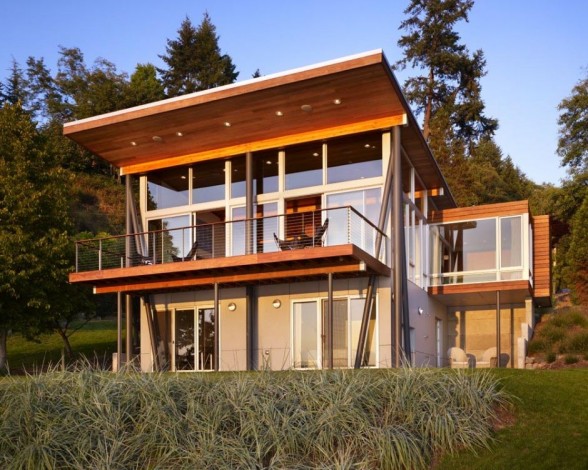
A rooftop is part of your building envelope. It is the covering on the uppermost part of your building or shelter which gives protection from animals and weather, rain or snow notably, but also heat, wind and sunlight. The term also denotes the framing or structure which supports that covering.[1]The characteristics of a roof are centered upon the purpose of the building so it covers, the available roof covering materials and the local traditions of structure and wider ideas of architectural design and practice and may also be governed by local or nationwide legislation. In most countries a roof protects mainly against rain. A verandah might be roofed with material that defends against sun light but admits the other elements. The roof of any garden conservatory protects plants from cold, wind, and rain, but admits light.

Shack manufactured from date palm branches at Neot Semadar, IsraelA roof covering may also provide additional liveable space, for example a roof structure garden.The elements in the design of a roof structure are:the materialthe constructionthe durabilityThe material of the roof may range from banana leaves, wheaten seagrass or straw to laminated a glass, copper (see: copper roofer), aluminium sheeting and pre-cast concrete. In lots of elements of the global world ceramic tiles have been the predominant roofer materials for years and years, if not millennia. Other roof covering materials include asphalt, coal tar pitch, EPDM rubber, Hypalon, reboundable foam, PVC, slate, Teflon textile, TPO, and lumber shakes and shingles.

The construction of the roof is determined by its method of support and how the underneath space is bridged and set up roof covering is pitched. The pitch is the perspective of which the roof rises from its least expensive to highest point. Most US domestic architecture, except in very dried out areas, has roofs that are sloped, or pitched. Although modern construction elements such as drainpipes may take away the dependence on pitch, roofs are pitched for reasons of aesthetics and custom. So the pitch is dependent upon stylistic factors partly, and partially to do with practicalities.

Some types of roofer, for example thatch, need a steep pitch in order to be waterproof and durable. Other types of roofing, for example pantiles, are unstable over a steeply pitched roof but provide excellent weather protection at a relatively low angle. In parts where there is little rain, an almost chiseled roof with hook run-off provides sufficient protection against an intermittent downpour. Drainpipes also remove the dependence on a sloping roof top.

A person that specializes in roof construction is named a roofer.The durability of any roof structure is a subject of concern because the roof top is usually the least accessible part of any building for purposes of repair and renewal, while its destruction or destruction can have serious effects.

Because the reason for a roofing is to protect people and their belongings from climatic elements, the insulating properties of an roof are a thought in its structure and the choice of roofing material.Some roofer materials, specifically those of natural fibrous material, such as thatch, have excellent insulating properties. For all those that not, extra insulation is installed under the external part often. In developed countries, the majority of dwellings have a ceiling installed under the structural members of the roof. The goal of a roof is to insulate against warmth and cold, sound, dirt and grime and often from the droppings and lice of wild birds who frequently choose roofs as nesting places.

Cement tiles can be utilized as insulation. When installed departing a space between your tiles and the roof structure surface, it can reduce home heating caused by sunlight.Forms of insulation are plastic material or believed sheeting, with a reflective surface sometimes, installed directly below the tiles or other material; synthetic foam batting laid above the ceiling and recycled paper products and other such materials that may be inserted or sprayed into roof cavities. So called Cool roofs are becoming popular increasingly, and in some full cases are mandated by local codes. Cool roofs are defined as roofs with both high reflectivity and high thermal emittance.

Poorly insulated and ventilated roofing can have problems with problems such as the formation of glaciers dams throughout the overhanging eaves in winter, causing water from melted snow on top elements of the roof to penetrate the roofing materials. Ice dams appear when temperature escapes through the uppermost part of the roof, and the snow at those factors melts, refreezing as it drips along the shingles, and collecting in the form of ice at the lower points. This may bring about structural harm from stress, including the damage of gutter and drainage systems.
Some Simple Storage Shed Designs Shed Blueprints

DIY Shed Roof Framing Design PDF Plans Download buchnamle

shedroofhouseshedroofcabinplanshowtobuilddiyblueprintspdf

Shed House Plans at eplans.com ContemporaryModern House Plans

Thanks a lot for reading and visit our blog, don't forget to share this post.
 Some types of roofer, for example thatch, need a steep pitch in order to be waterproof and durable. Other types of roofing, for example pantiles, are unstable over a steeply pitched roof but provide excellent weather protection at a relatively low angle. In parts where there is little rain, an almost chiseled roof with hook run-off provides sufficient protection against an intermittent downpour. Drainpipes also remove the dependence on a sloping roof top.
Some types of roofer, for example thatch, need a steep pitch in order to be waterproof and durable. Other types of roofing, for example pantiles, are unstable over a steeply pitched roof but provide excellent weather protection at a relatively low angle. In parts where there is little rain, an almost chiseled roof with hook run-off provides sufficient protection against an intermittent downpour. Drainpipes also remove the dependence on a sloping roof top.